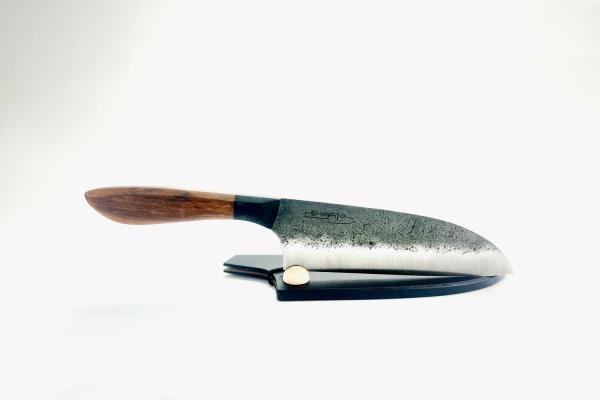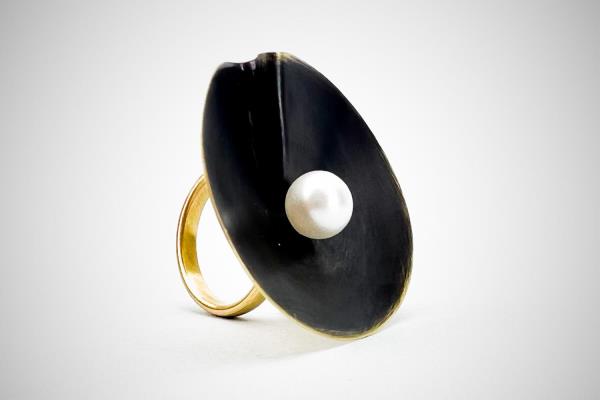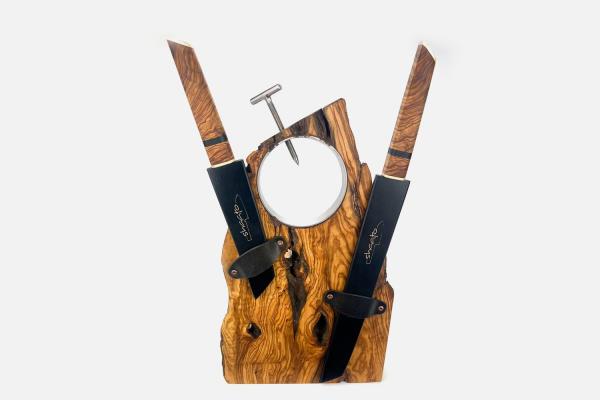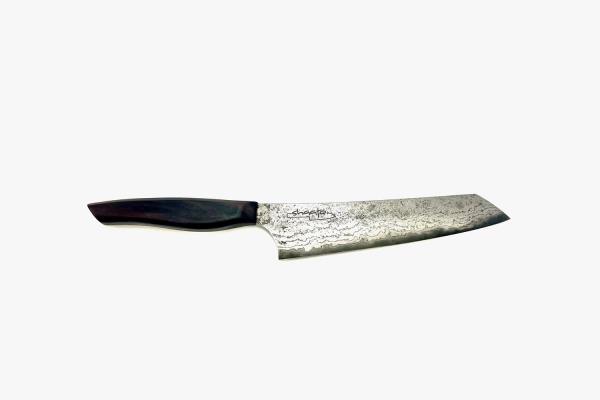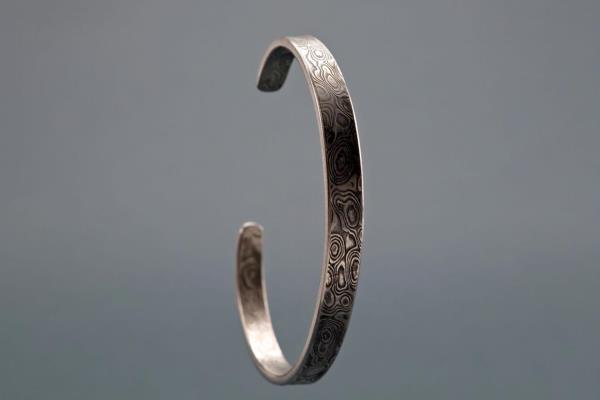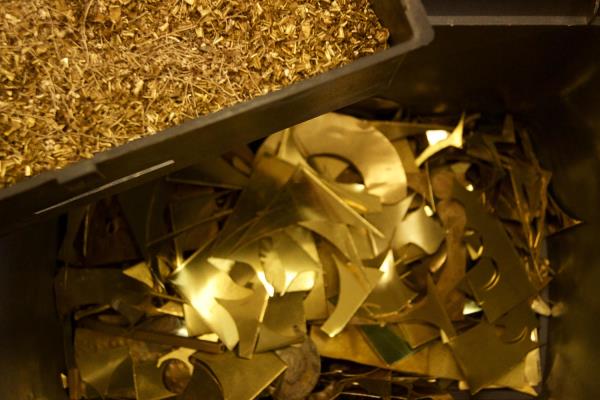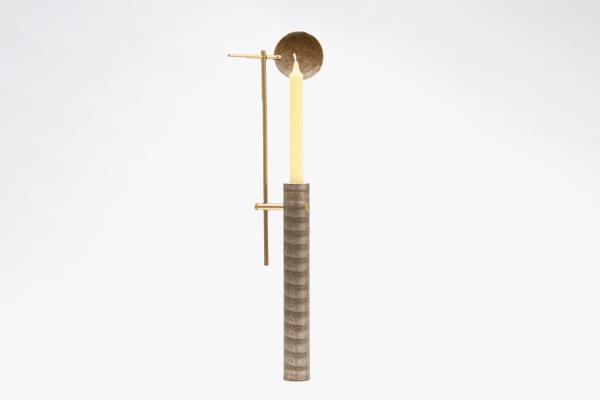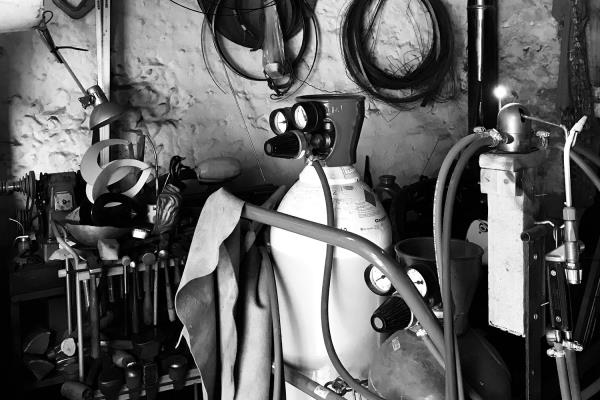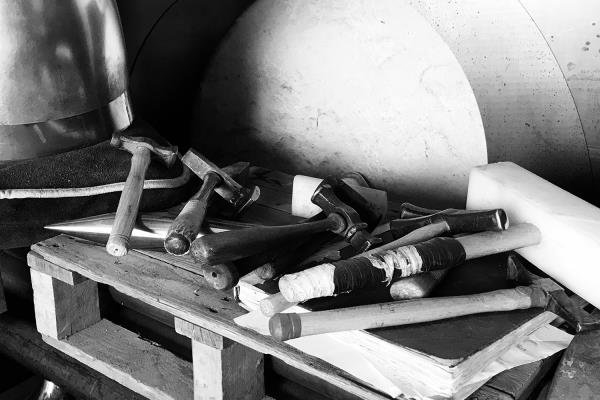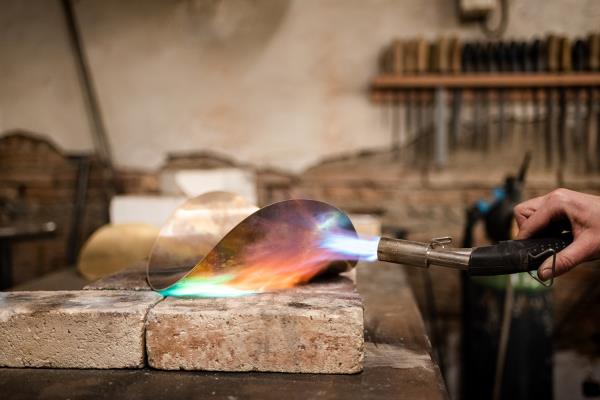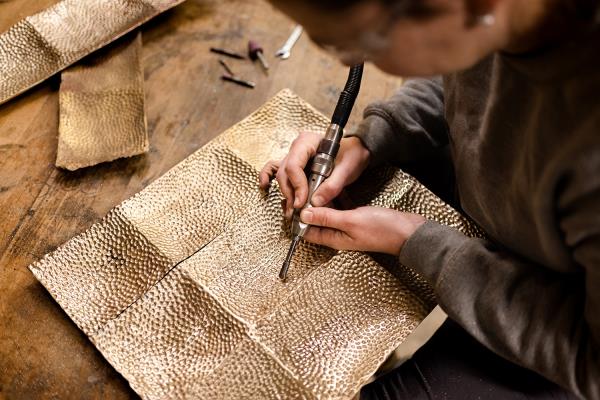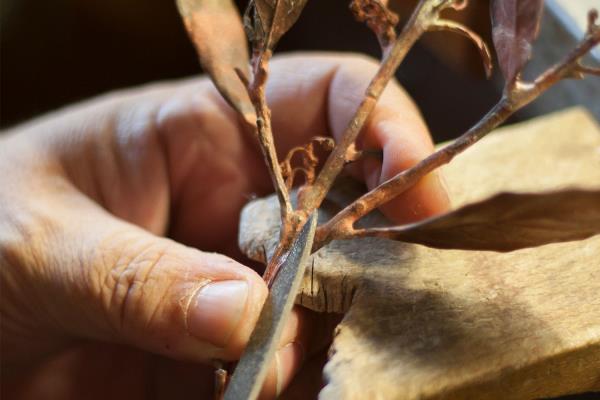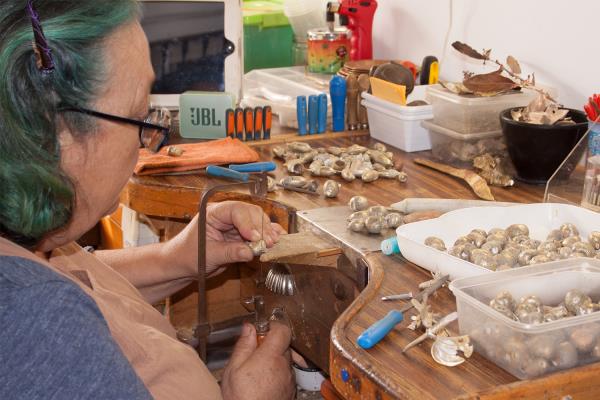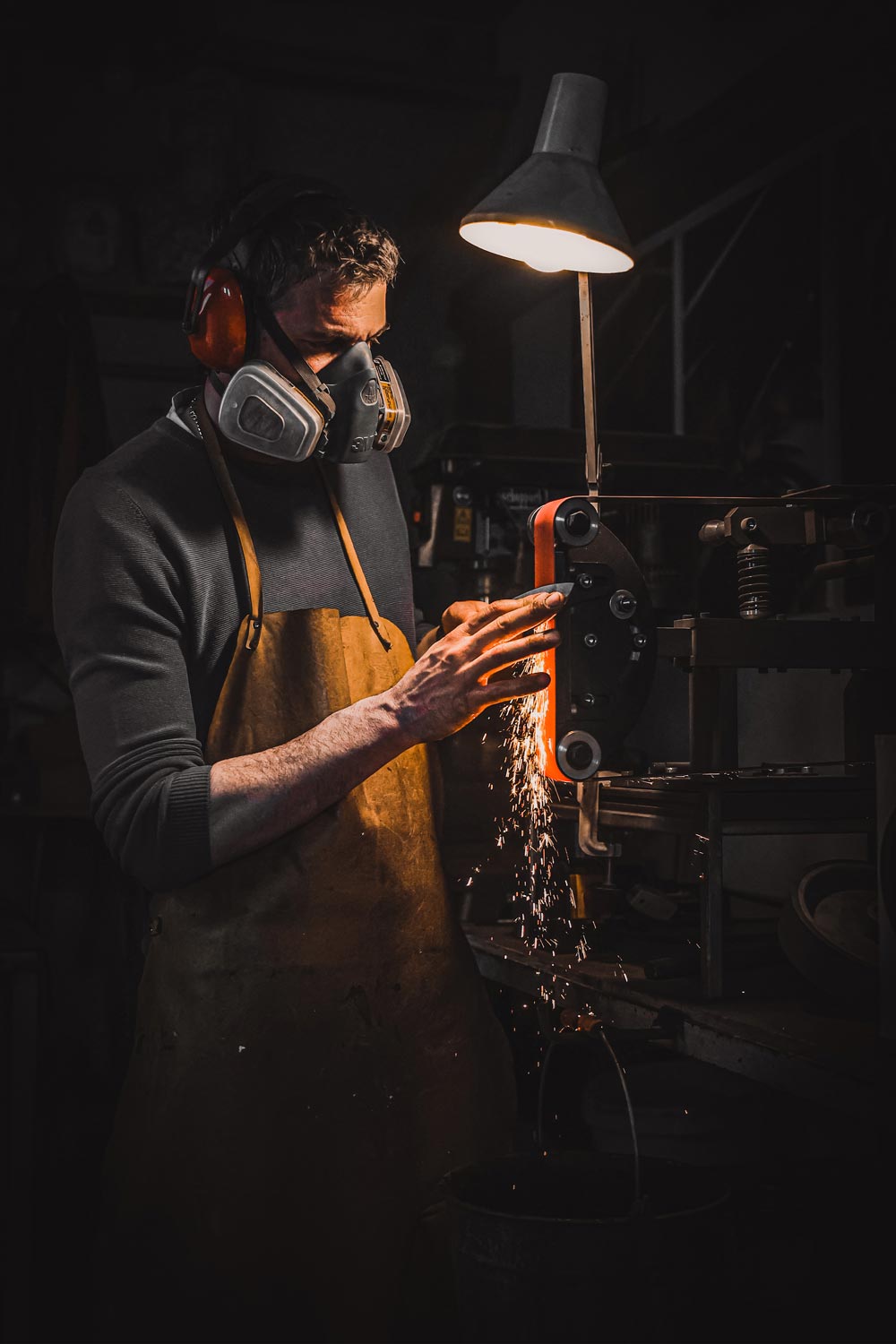
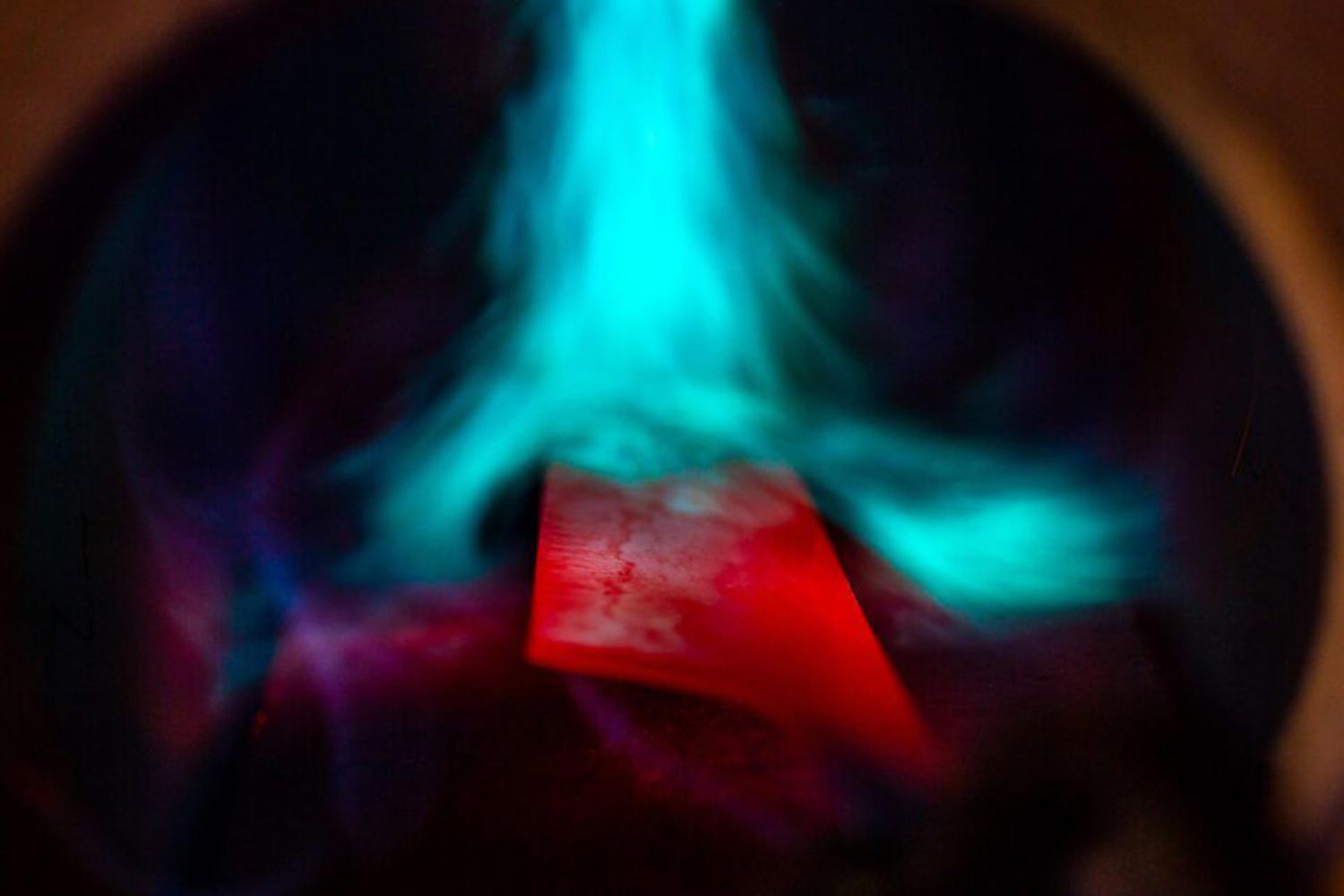
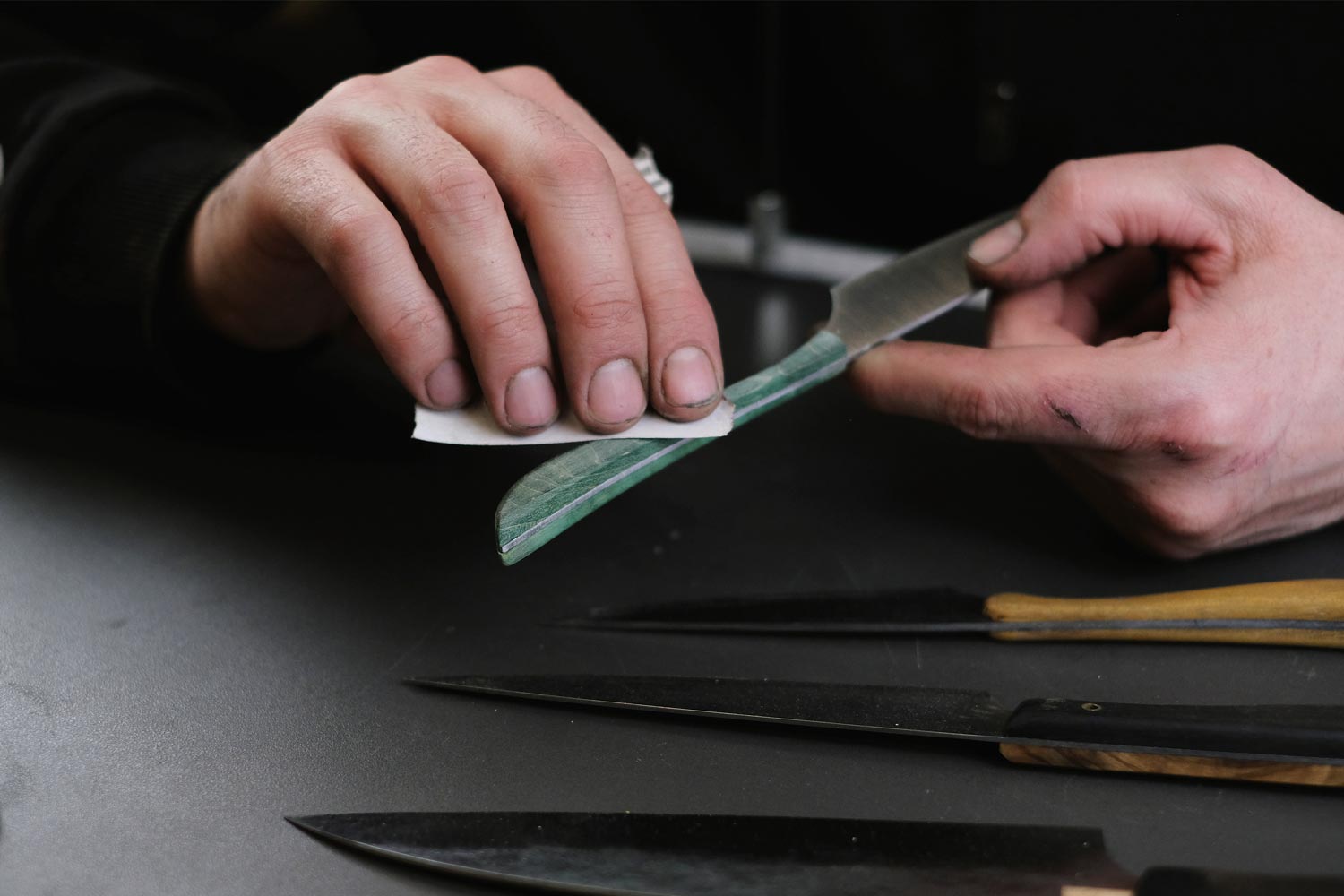
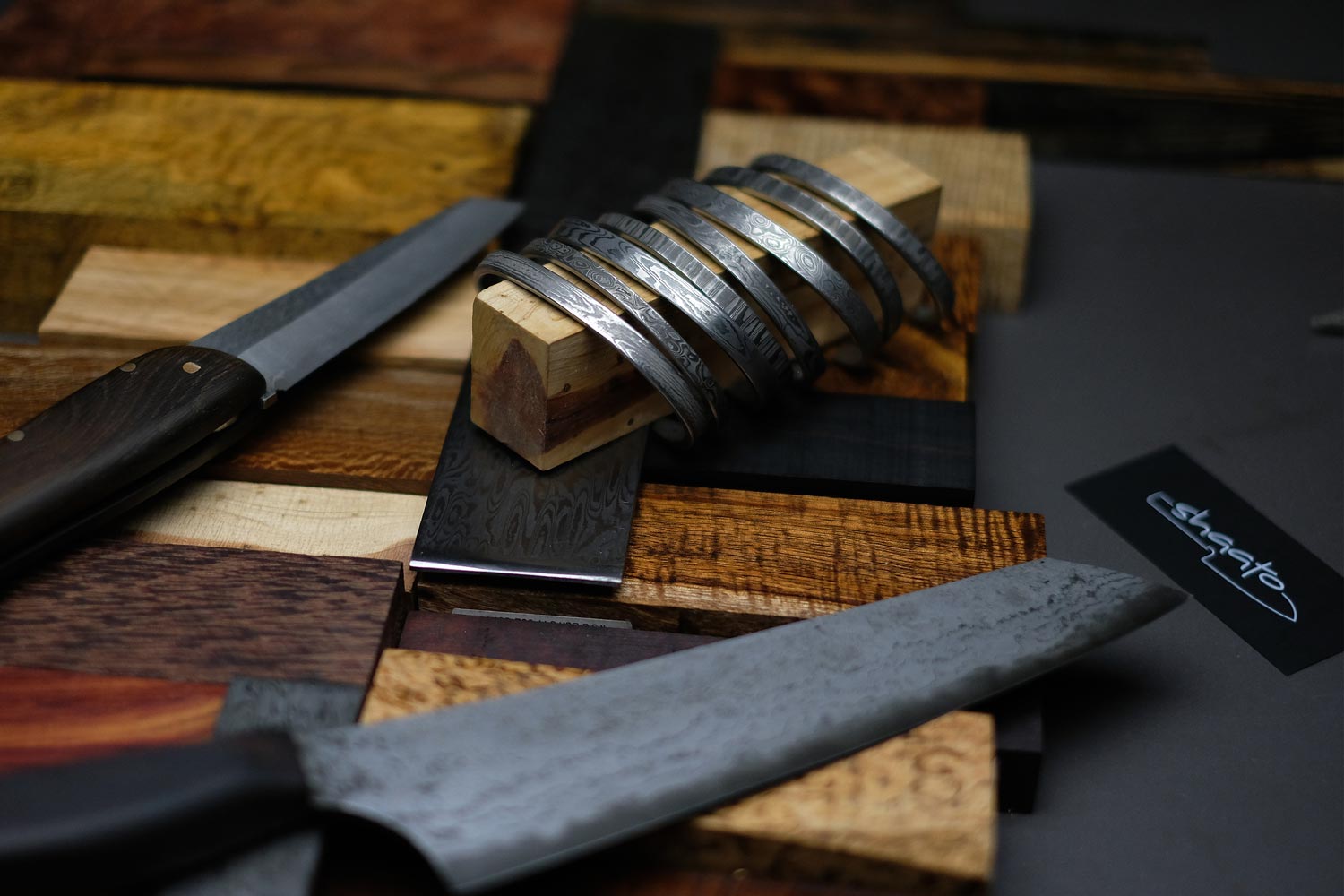




Knives inspired by Japan
- Silvio had a passion for blade smithing and jewellery
- He forges and quenches by hand
- He is fascinated with Japanese katanas
Silvio Hrnčir is an academic sculptor who graduated from the Academy of Fine Arts in Zagreb in 2008. He started his sculpting career when he was only 14, with his parents who had a stone masonry workshop at the time. During the last 20 years he has worked with many different materials including stone, wood, precious metals and produced a big variety of objects such as car parts, lamps, furniture and sculptures. For the last few years, he has been committed to making jewellery and forging knives, which led him to opening his own workshop and founding his brand, Shaato, which derives from Silvio’s initials and the Japanese word for art. “Turning steal into a beautiful everyday tool like a knife is something really special to me”, says Silvio.
Interview


- How did your fascination with knives start?
- There has always been a special bond between me and metals. I started with sculpting, went into jewellery making and ended up forging knives. I feel like forging is my true passion and everything else I did was just a step that led me to making knives.
- When and how did you make your first knife?
- I started by making a katana, and then I came across Karlo Ban, my knive forging mentor. He was delighted with my work on the katana, but he advised me to start making kitchen knives first. I made the first knife from an old file, and I still have it.
- How much time is needed to forge a single knife?
- Every knife needs complete focus in every step of the process and that's why I make just one knife at a time. Production of one knife can take up to several days because I am a perfectionist. It is a lot of work, but also a great joy.
- What is the process behind making a knife?
- After heating a piece of steel, it hardens in water or oil. The material is then returned to the oven at a certain temperature so that it is not brittle, but tough. After that, the blade goes to grinding, during which a lot of material is removed. Sharpening follows at the end.
Silvio Hrnčir is a rising star: he began his career in 2019 and he started teaching in 2020
Where
Silvio Hrnčir
